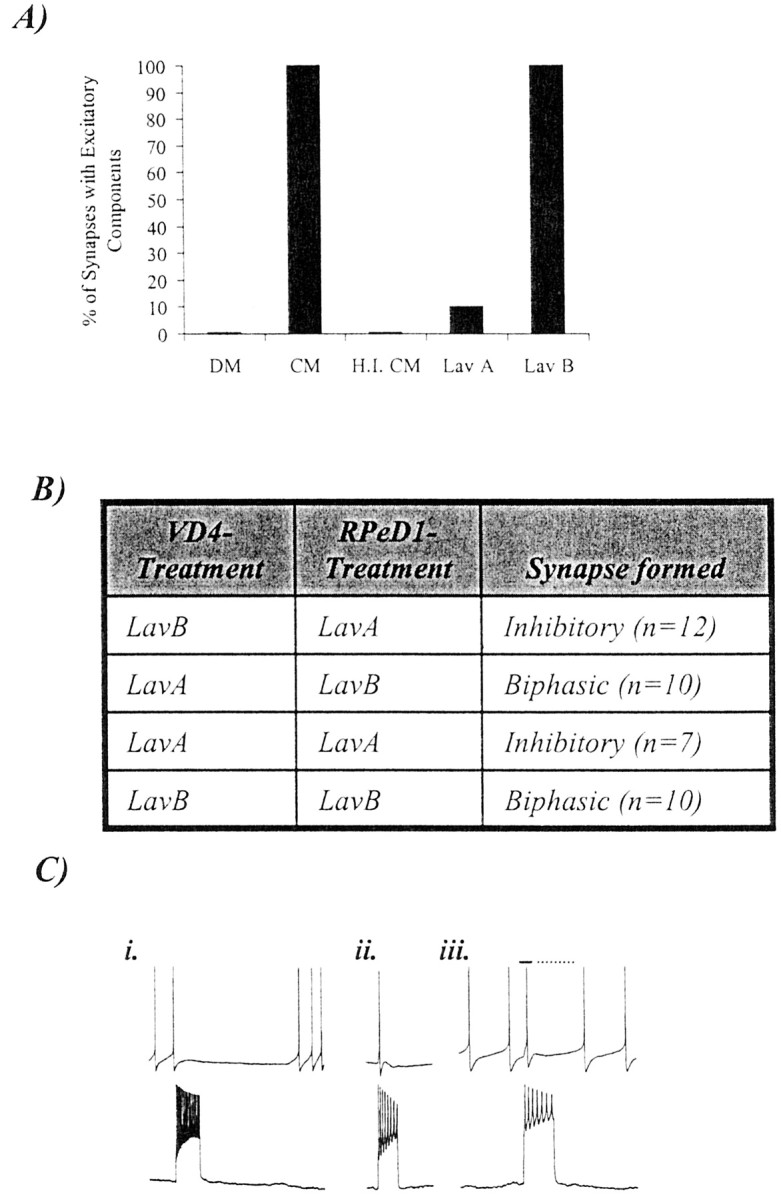Fig. 4.

The CM-induced excitatory synaptic component between VD4 and RPeD1 requires postsynaptic activation of receptor tyrosine kinases. A, When paired in DM, the excitatory synaptic component of the biphasic synapse did not develop between VD4 and RPeD1 (n = 26). In 100% CM, however, a biphasic synapse developed reliably (n = 30). The excitatory synaptic component of this biphasic synapse failed to develop in heat-inactivated 100% CM (H.I. CM;n = 5). In addition, the CM-induced excitatory synaptic component was also blocked when pairs were incubated in CM containing a receptor tyrosine kinase inhibitor (Lav A;n = 12) but not by its inactive form (Lav B; n = 5). B, To determine whether the trophic factor-induced development of BPSPs required presynaptic or postsynaptic RTK activity, cells were selectively incubated in either LavA or LavB. Specifically, VD4 and RPeD1 were selectively incubated in either LavA or LavB and then soma–soma-paired in the following four configurations: (1) RTK activity blocked in postsynaptic neurons, (2) RTK activity blocked in presynaptic neurons, (3) RTK activity blocked in both neurons, and (4) RTK activity not blocked in either neuron. C, Selective block of RTK activity in the postsynaptic cell prevented the development of a biphasic synapse, and only an inhibitory synapse formed. A burst train of action potentials in VD4 under such conditions inhibited spontaneously firing of action potentials in RPeD1 (i). In contrast, when RTK activity was selectively blocked in the presynaptic neuron, there was no affect on the development of the biphasic synapse. Specifically, a burst of action potentials in VD4 induced an action potential in RPeD1 followed by an IPSP (ii; VR, −56 mV). Likewise, a burst of action potentials in VD4 initially enhanced the rate of spontaneous activity (iii,solid line) in RPeD1, followed by an inhibition of the firing of action potentials (iii, dotted line).
